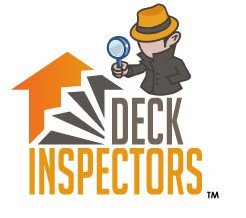SB 721 Inspection Requirements for Landlords
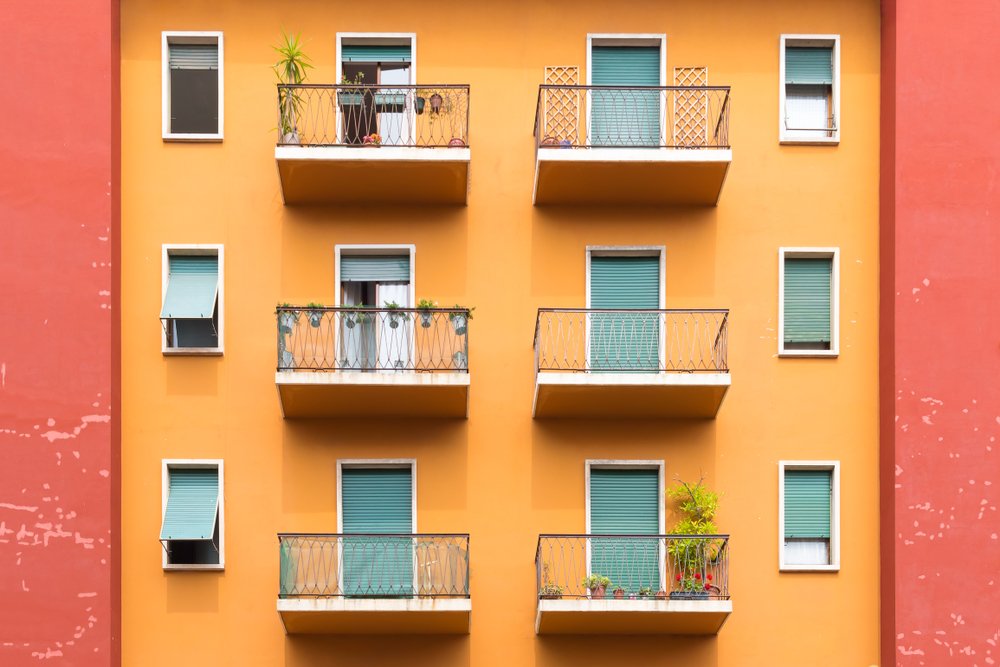
In California, the safety and structural integrity of balconies, decks, and other elevated exterior elements are paramount. Senate Bill 721 (SB 721) sets forth specific inspection requirements for landlords to ensure these structures remain safe and well-maintained. Understanding the SB 721 Inspection requirements is essential for landlords to comply with the law and protect their tenants. This article outlines the legal obligations under SB 721 and emphasizes the importance of adherence to these regulations. Legal Requirements Under SB 721 SB 721 mandates that multi-unit residential buildings undergo periodic inspections of balconies, decks, stairways, walkways, and railings. Specifically, the law requires a visual inspection conducted at least once every six years by a licensed professional. The primary focus of the SB 721 Inspection is to identify any signs of decay, water intrusion, or other factors that could compromise the structural integrity of these elements. The inspection must cover a statistically significant sample of the building’s exterior elevated elements, ensuring a comprehensive assessment. The findings from the SB 721 Inspection must be documented in a detailed report, which includes the condition of the elements inspected, any deficiencies found, and recommendations for necessary repairs or replacements. Landlords must submit this report to the local enforcement agency and retain a copy for their records. The Importance of Adhering to SB 721 Inspection Requirements Adhering to SB 721 Inspection requirements is a legal obligation and a critical measure for ensuring tenant safety. Balconies and other elevated structures are subject to wear and tear over time, especially in areas with varying weather conditions. Regular inspections help identify potential hazards before they lead to accidents, such as collapses or falls, which can result in severe injuries or fatalities. Moreover, compliance with SB 721 can protect landlords from legal and financial repercussions. In an incident caused by a neglected or unsafe structure, landlords may face lawsuits, hefty fines, and increased insurance premiums. By proactively conducting the required SB 721 Inspection and addressing any issues identified, landlords can mitigate these risks and demonstrate a commitment to maintaining a safe living environment for their tenants. Beyond legal and safety considerations, adhering to SB 721 Inspection requirements also contributes to the long-term preservation of the property. Regular maintenance and timely repairs help maintain the building’s value and appeal, making it a more attractive option for current and potential tenants. In the competitive rental market, properties prioritizing safety and maintenance can be desirable living places. Conclusion The SB 721 Inspection requirements for landlords in California are critical to ensuring the safety and structural integrity of balconies, decks, and other elevated exterior elements. By understanding and adhering to these legal obligations, landlords can protect their tenants, avoid legal and financial risks, and maintain the value of their properties. Regular inspections and maintenance are regulatory requirements and essential practices for responsible property management. Contact an expert at Deck Inspectors of Southern California today by clicking here! Deck Inspectors for Southern California is happy to offer our services in Los Angeles, Orange County as well as San Diego and all Southern California surrounding areas like: Glendale, Pasadena, Burbank, Santa Monica, Anaheim, Temecula, Vista, Escondido, Carlsbad, and El Cajon
Balcony Construction Safety Tips for Homeowners

A well-constructed balcony adds value and charm to any home, offering a space for relaxation and entertainment. However, ensuring the safety and durability of your balcony requires regular maintenance and careful attention to construction details. As a deck inspection company in Southern California, we provide essential Balcony Construction safety tips to help homeowners maintain a secure outdoor space. This article covers best practices for keeping your balcony in top condition, such as inspecting handrails and checking for loose boards. Regular Inspection and Maintenance One of the most critical aspects of maintaining a safe balcony is conducting regular inspections. Over time, exposure to weather elements and daily use can cause wear and tear on various components. Homeowners should routinely check for any signs of damage or deterioration. Inspecting key areas include the decking boards, support beams, and connection points. During your inspection, pay close attention to the condition of the decking boards. Loose, warped, or rotting boards can pose significant safety hazards. If you notice any unstable or damaged boards, it is essential to repair or replace them promptly. In addition, ensure that the screws or nails holding the boards in place are secure and have not rusted. Regularly tightening these fasteners can prevent the boards from becoming loose over time. Another critical component to inspect is the handrails. Handrails provide crucial support and safety, preventing falls and accidents. Ensure the handrails are firmly attached and do not wobble when applying pressure. Check for any signs of rust, corrosion, or wood rot, which can weaken the handrail’s structure. If you find any issues, address them immediately to maintain the integrity of the Balcony Construction. Ensuring Proper Drainage and Water Protection Water damage is common in Balcony Construction, particularly in areas like Southern California, where moisture can accumulate during rainy seasons. Proper drainage and water protection are essential to prevent water from seeping into the materials and causing rot or structural damage. Homeowners should ensure that their balcony has adequate drainage systems, such as slopes and gutters, to direct water away from the structure. Consider applying a waterproof sealant to the decking boards to protect your balcony from water damage. This sealant creates a barrier that helps prevent water penetration, extending the lifespan of the wood. Additionally, inspect the flashing and caulking around the edges of the balcony and the points where it connects to the house. These areas are prone to water intrusion and should be well-sealed to prevent leaks. For balconies with overhangs or roofs, ensure the roofing materials are in good condition and leak-free. Water from rain or other sources should be directed away from the balcony surface to prevent pooling and potential water damage. Regularly clean out debris from gutters and downspouts to ensure proper water flow and drainage. Conclusion Maintaining the safety and integrity of your balcony requires proactive attention and regular maintenance. Following these Balcony Construction safety tips, homeowners can ensure their outdoor spaces remain safe and durable. Regularly inspecting for loose boards, securing handrails, and ensuring proper drainage are essential steps in preventing accidents and extending the life of your balcony. As a trusted deck inspection company in Southern California, we are here to provide expert guidance and services to help you maintain a safe and beautiful balcony. Contact an expert at Deck Inspectors of Southern California today by clicking here! Deck Inspectors for Southern California is happy to offer our services in Los Angeles, Orange County as well as San Diego and all Southern California surrounding areas like: Glendale, Pasadena, Burbank, Santa Monica, Anaheim, Temecula, Vista, Escondido, Carlsbad, and El Cajon
Beyond the Balcony: Exploring the Importance of SB 326 Inspections
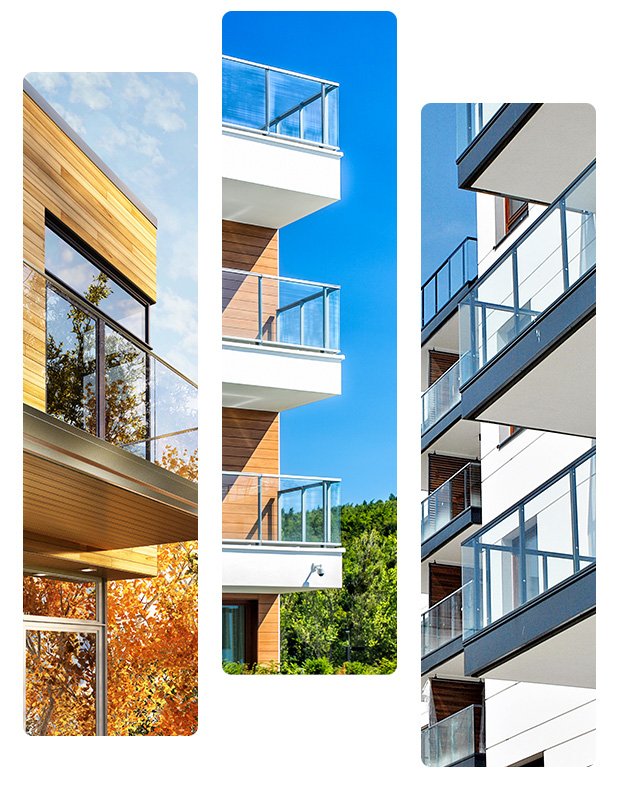
The passage of Senate Bill 326 (SB 326) has introduced critical safety measures for multifamily dwelling units in California, emphasizing the importance of regular balcony and elevated exterior element inspections. For property owners and managers, understanding the intricacies of an SB 326 Inspection is crucial for compliance and ensuring the safety and longevity of their properties. This article delves into the importance of these inspections, highlighting the broader impact beyond just balcony assessments. The Scope of SB 326 Inspections SB 326 mandates that all multifamily residential buildings with three or more units must thoroughly inspect exterior elevated elements, including balconies, decks, stairways, walkways, and railings. This comprehensive approach ensures that all structural components are scrutinized for potential damage or deterioration that could pose safety risks. The SB 326 Inspection focuses on evaluating the condition of these elements, particularly looking for signs of water intrusion, dry rot, or other forms of decay that may compromise structural integrity. By conducting an SB 326 Inspection, property owners can identify issues early and undertake necessary repairs, thereby preventing accidents and ensuring the safety of residents. The law requires inspections every six years, with a report detailing the findings and any recommended actions to be provided to the homeowners’ association or property owners. This regular assessment is vital for maintaining the overall health of the building’s exterior systems. The Broader Impact of SB 326 Inspections While the primary goal of an SB 326 Inspection is to ensure the safety of balconies and other exterior elevated elements, the benefits extend far beyond these specific components. Regular inspections contribute to the overall maintenance and preservation of the property. By identifying and addressing potential problems early, property owners can avoid costly repairs and maintain the property’s value. Moreover, the proactive approach mandated by SB 326 enhances the living experience for residents, providing peace of mind knowing that their living environment is safe and well-maintained. Furthermore, compliance with SB 326 can have significant legal and financial implications. Failure to conduct the mandated inspections and follow through with necessary repairs can result in legal liability in the event of an accident. If negligence is proven, property owners may face lawsuits, fines, and increased insurance premiums. Therefore, adhering to SB 326 Inspection requirements is a matter of safety and a critical aspect of risk management for property owners and managers. Conclusion The importance of SB 326 Inspections goes beyond the immediate safety of balconies and other exterior elevated elements. It encompasses a broader commitment to property maintenance, resident safety, and legal compliance. By understanding and adhering to the requirements of an SB 326 Inspection, property owners and managers can protect their investments, enhance the living conditions of their residents, and mitigate potential legal and financial risks. Regular inspections and timely repairs are essential to responsible property management, ensuring buildings remain safe and sound for years. Contact an expert at Deck Inspectors of Southern California today by clicking here! Deck Inspectors for Southern California is happy to offer our services in Los Angeles, Orange County as well as San Diego and all Southern California surrounding areas like: Glendale, Pasadena, Burbank, Santa Monica, Anaheim, Temecula, Vista, Escondido, Carlsbad, and El Cajon
The Impact of SB 326 on Multifamily Dwelling Unit Owners and Managers

The safety and integrity of balconies, decks, and elevated walkways in multifamily housing are critical for ensuring the well-being of residents. In California, Senate Bill 326 (SB 326) was enacted to address concerns related to the structural safety of these common areas. As a deck inspection company in Southern California, we understand the implications of SB 326 for multifamily dwelling unit owners and managers. This article explores the key aspects of SB 326 and how it affects property maintenance and management. Understanding SB 326 and Its Requirements SB 326 mandates regular inspections of exterior elevated elements in multifamily buildings. This includes decks, balconies, and walkways. The legislation aims to prevent accidents and structural failures by ensuring these elements are safe for use. The bill requires that these inspections be conducted by a licensed structural engineer or architect at least once every six years. The scope of the inspections under SB 326 includes a thorough assessment of all accessible EEEs. This involves evaluating the condition of structural supports, waterproofing, and other critical components that could affect the structure’s integrity. The inspection report must document the findings and recommendations for repairs or maintenance if necessary. Property owners and managers must address any identified issues promptly to comply with the law and ensure the safety of residents. Implications for Owners and Managers of Multifamily Dwellings SB 326 has significant implications for owners and managers of multifamily dwellings, particularly regarding maintenance responsibilities and legal compliance. The legislation imposes new obligations to regularly inspect and maintain EEEs, which can impact the operational budget and maintenance schedules. For property managers, SB 326 necessitates a proactive approach to building maintenance. Regular inspections must be scheduled and coordinated with licensed professionals, and any required repairs must be documented and completed promptly. This proactive maintenance ensures compliance with the law and helps prevent costly emergency repairs and potential liability issues arising from structural failures. Owners of multifamily properties must also be aware of the financial implications of this bill. The cost of inspections, repairs, and ongoing maintenance can be significant, especially for older buildings or those with extensive EEEs. However, investing in these inspections and maintenance is crucial for safeguarding residents’ safety and protecting the property’s value. Additionally, compliance with SB 326 can be a key factor in securing insurance coverage and maintaining favorable terms with lenders. Beyond legal and financial considerations, the bill promotes a culture of safety and accountability in managing multifamily properties. Property owners and managers demonstrate a commitment to providing safe living environments by adhering to the legislation’s requirements. This commitment can enhance the property’s reputation and appeal to potential tenants who prioritize safety and well-maintained living spaces. Conclusion SB 326 profoundly impacts the management and maintenance of multifamily dwelling units in California. The legislation ensures that these structures are safe and well-maintained by mandating regular inspections of exterior elevated elements. For owners and managers, SB 326 necessitates a proactive approach to building maintenance and compliance, with implications for budget planning and operational practices. We are dedicated to ensuring the safety and integrity of their properties for years to come. Contact an expert at Deck Inspectors of Southern California today by clicking here! Deck Inspectors for Southern California is happy to offer our services in Los Angeles, Orange County as well as San Diego and all Southern California surrounding areas like: Glendale, Pasadena, Burbank, Santa Monica, Anaheim, Temecula, Vista, Escondido, Carlsbad, and El Cajon
What to Expect During an Apartment Deck Inspection
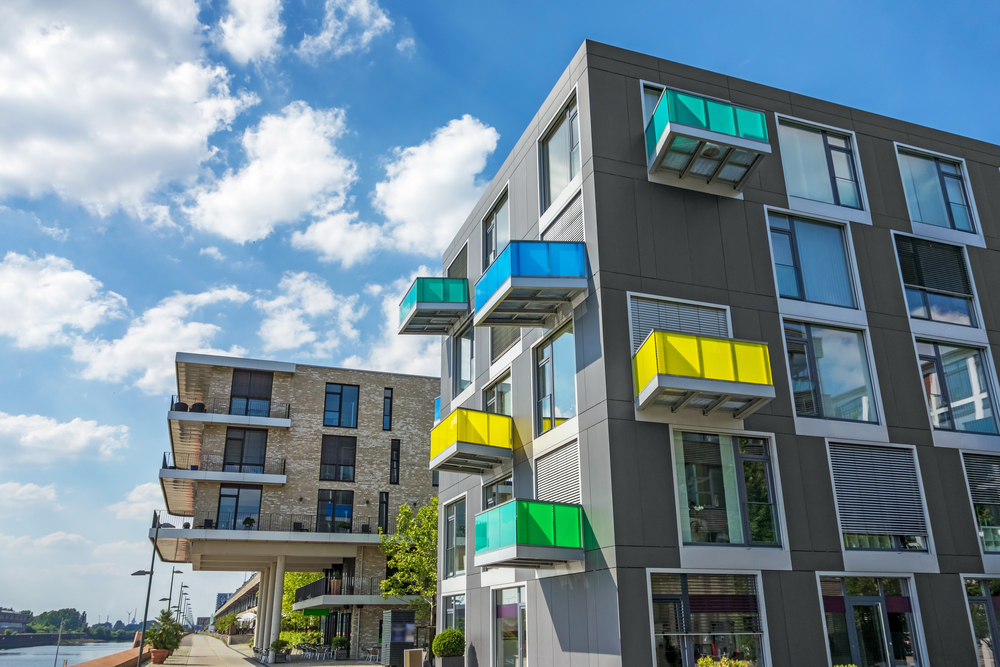
Regular maintenance and safety checks are crucial for ensuring the structural integrity of apartment decks. As a deck inspection company in Southern California, we specialize in providing thorough and professional Apartment Deck Inspections. This article outlines what to expect during an inspection, helping property owners and managers understand the key elements. The Initial Apartment Deck Inspection Assessment The first step in an Apartment Deck Inspection is the initial assessment, where inspectors evaluate the overall condition of the deck. This includes visually inspecting the deck’s surface, railings, and support structures. During this phase, our team looks for signs of wear and tear, such as cracks, splits, or warping in the decking material. We also check for any visible signs of rot, rust, or corrosion, which can compromise the deck’s safety. Inspectors pay special attention to the connection points, such as where the deck attaches to the building. These areas are critical for the deck’s stability and must be securely fastened. Loose or corroded fasteners can indicate underlying structural issues that must be addressed. Additionally, we assess the condition of the railings and ensure they are sturdy and meet safety codes. Proper railing height and spacing are essential for preventing accidents, especially in multi-story apartment buildings. Detailed Structural Evaluation The second phase of the Apartment Deck Inspection involves a detailed structural evaluation. This is where our inspectors delve deeper into the deck’s support systems, including the joists, beams, and posts. These components are the backbone of the deck’s structure, and any deficiencies can lead to serious safety hazards. Our team uses specialized tools and techniques to check for hidden damage that may not be visible during the initial assessment. For example, moisture meters can detect the presence of water within the wood, which can lead to rot over time. We also look for signs of insect infestation, such as termite damage, which can weaken the wood and compromise the deck’s integrity. Another crucial aspect of the structural evaluation is checking for compliance with local building codes and regulations. In Southern California, specific guidelines must be followed to ensure the safety of apartment decks, particularly concerning seismic activity. Our inspectors verify that the deck’s design and construction adhere to these standards, ensuring it can withstand the stresses of the environment. Apartment Deck Inspection Conclusion An Apartment Deck Inspection is a comprehensive process that involves assessing the visible and hidden aspects of a deck’s condition. From the initial visual inspection to the detailed structural evaluation, our team ensures that all potential issues are identified and addressed. This thorough approach helps property owners and managers maintain safe and durable decks for their tenants. In Southern California, where weather conditions and seismic activity can affect the longevity of decks, regular inspections are essential for preventing accidents and costly repairs. Trust our experienced team to provide reliable and professional Apartment Deck Inspections, ensuring your property’s safety and compliance with local regulations. Get in contact with a deck inspection expert today by clicking here! Deck Inspectors for Southern California is happy to offer our services in Los Angeles, Orange County as well as San Diego and all Southern California surrounding areas like: Glendale, Pasadena, Burbank, Santa Monica, Anaheim, Temecula, Vista, Escondido, Carlsbad, and El Cajon
The Future of Building Safety: What SB 721 Inspection Means for Construction Standards

In recent years, the construction industry in California has seen significant regulatory changes aimed at enhancing building safety. One of the most impactful is SB 326, which mandates regular inspections of exterior elevated elements in multifamily residential buildings. This legislation and SB 721 have set new benchmarks for construction standards, emphasizing the need for rigorous inspection protocols. Here’s what SB 326 means for construction standards and the future of building safety. Raising the Bar for Construction Quality Enhanced SB 721 Inspection Protocols SB 326 and SB 721 inspections require thoroughly evaluating exterior elevated elements such as decks, balconies, and stairways. These inspections are designed to identify potential structural issues that could compromise safety. As a result, construction standards are elevated to ensure that elements are built to withstand environmental stressors and long-term wear and tear. Builders and contractors are now more vigilant in using high-quality materials and employing best practices to meet these stringent standards. Regular inspections mandated by SB 326 ensure that any deviations from construction standards are promptly identified and rectified. This continuous oversight enhances the quality of new constructions and ensures that existing structures meet the highest safety standards. Focus on Durability and Longevity SB 326 inspections highlight the importance of structural integrity. So, there is a growing focus on the durability and longevity of building materials. Construction standards are evolving to prioritize materials that offer enhanced resistance to moisture, rot, and other forms of deterioration. This shift drives innovation in the construction industry, with new materials and technologies being developed to meet these higher standards. Builders must now provide detailed documentation of the materials and construction methods employed. This ensures that all aspects of the building process adhere to the latest safety regulations. This increased transparency and accountability are setting new benchmarks for quality and safety in the construction industry. Impact on Property Management and Maintenance Proactive Maintenance Practices Implementing SB 326 has underscored the importance of proactive maintenance practices for property owners and managers. Regular SB 721 inspections help identify potential safety hazards and encourage a culture of ongoing maintenance and upkeep. Property owners are now more inclined to invest in regular inspections and repairs, knowing that these proactive measures can prevent future costly and dangerous structural failures. By integrating regular inspections into their maintenance routines, property owners can ensure that their buildings remain safe and compliant with the latest construction standards. This proactive approach not only protects residents but also preserves the value and longevity of the property. Increased Accountability: SB 326 & SB 721 Inspections SB 326 has increased accountability for both builders and property owners. Builders must ensure that their constructions meet the required standards from the outset, while property owners are responsible for maintaining these standards through regular inspections and repairs. This dual accountability ensures all stakeholders are committed to upholding the highest safety standards. Property managers must maintain detailed records of all inspections and maintenance activities, providing a clear audit trail demonstrating compliance with SB 721 inspection requirements. This increased accountability helps build trust and confidence among residents, who know their safety is a top priority. SB 721 Inspection: A Safer Future for California’s Buildings In conclusion, SB 326 represents a significant step in enhancing California’s building safety and construction standards. This legislation ensures that new and existing structures are built and maintained to the highest safety standards by mandating regular inspections of exterior elevated elements. The impact of SB 326 extends beyond immediate safety benefits, fostering a culture of quality, durability, and accountability within the construction industry. As builders and property owners adapt to these new requirements, the future of building safety in California looks brighter than ever. Embracing these higher standards protects residents and sets a precedent for the rest of the construction industry. The continued evolution of construction standards, driven by SB 326 and SB 721 inspections, promises a safer and more secure built environment for all. Get in contact with a professional deck inspector today by clicking here! Deck Inspectors for Southern California is happy to offer our services in Los Angeles, Orange County as well as San Diego and all Southern California surrounding areas like: Glendale, Pasadena, Burbank, Santa Monica, Anaheim, Temecula, Vista, Escondido, Carlsbad, and El Cajon
Preparing Your Apartment Deck for Any Weather
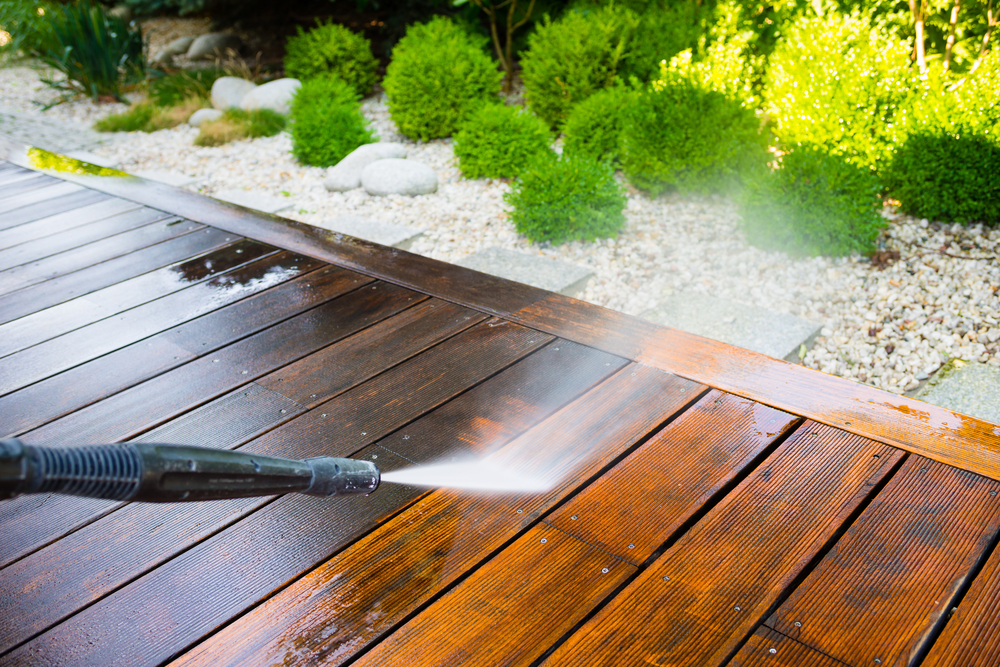
Balcony decks are valuable in apartment living, providing outdoor space for relaxation and entertainment. However, exposure to various weather conditions can damage their structural integrity and appearance. To ensure your balcony deck remains safe and appealing year-round, it’s essential to take preventative measures against weather damage. Here are some effective strategies to prepare your apartment deck for any weather. Protective Measures Against Weather Damage Sealing and Waterproofing Balcony Decks Sealing and waterproofing are the most effective ways to protect balcony decks from weather damage. Apply a high-quality sealant to the deck surface to create a barrier against moisture. This is especially important for wooden decks, as untreated wood can absorb water, leading to rot, warping, and mildew growth. Waterproofing membranes and coatings can be applied to both wooden and concrete decks. These products help prevent water penetration, reducing the risk of structural damage and extending the deck’s lifespan. Ensure the edges and joints are well-sealed, as these areas are prone to water infiltration. Choosing Weather-Resistant Materials Select materials that can withstand various weather conditions when building or renovating a balcony deck. Composite decking materials, for example, are highly resistant to moisture, UV rays, and temperature fluctuations. They require less maintenance than traditional wood and are less likely to warp, splinter, or rot. For railings and fasteners, opt for stainless steel or galvanized hardware, which are resistant to rust and corrosion. These materials ensure the deck remains sturdy and secure, even in harsh weather conditions. Balcony Decks: Routine Maintenance and Inspection Regular Cleaning Keeping your balcony deck clean is a simple yet crucial step in preventing weather damage. Debris, such as leaves, dirt, and pollen, can trap moisture and create a breeding ground for mold and mildew. Regularly sweep the deck to remove debris and wash the surface with a mild detergent. Consider using a pressure washer for deeper cleaning, but be cautious with the pressure settings to avoid damaging the deck material. Cleaning enhances the deck’s appearance and helps maintain its structural integrity. Seasonal Inspections and Repairs Conducting seasonal inspections allows you to identify and address potential issues before they become major problems. Inspect the deck for signs of wear and tear, such as cracks, splinters, loose boards, or rusted fasteners. Pay special attention to the areas where the deck attaches to the building, as these points are critical for structural stability. Promptly repair any damage to prevent it from worsening. Replace damaged boards, tighten loose fasteners, and reapply sealant or waterproofing. Regular maintenance ensures that the deck remains safe and functional throughout the year. Protecting Balcony Decks Year-Round In conclusion, preparing your apartment deck for any weather involves a combination of protective measures and routine maintenance. Sealing and waterproofing the deck, choosing weather-resistant materials, and performing regular cleaning and inspections can significantly reduce the risk of weather-related damage. Balcony decks are an excellent addition to apartment living, offering outdoor space and enhancing the property’s overall appeal. To enjoy these benefits year-round, it’s essential to take proactive steps in maintaining the deck’s condition. By following these guidelines, you can ensure that your balcony deck remains a safe, attractive, and durable space, no matter the weather conditions. Get in contact with a professional deck inspector today by clicking here! Deck Inspectors for Southern California is happy to offer our services in Los Angeles, Orange County as well as San Diego and all Southern California surrounding areas like: Glendale, Pasadena, Burbank, Santa Monica, Anaheim, Temecula, Vista, Escondido, Carlsbad, and El Cajon
Breaking Down the Balcony: What to Expect During an SB 721 Inspection
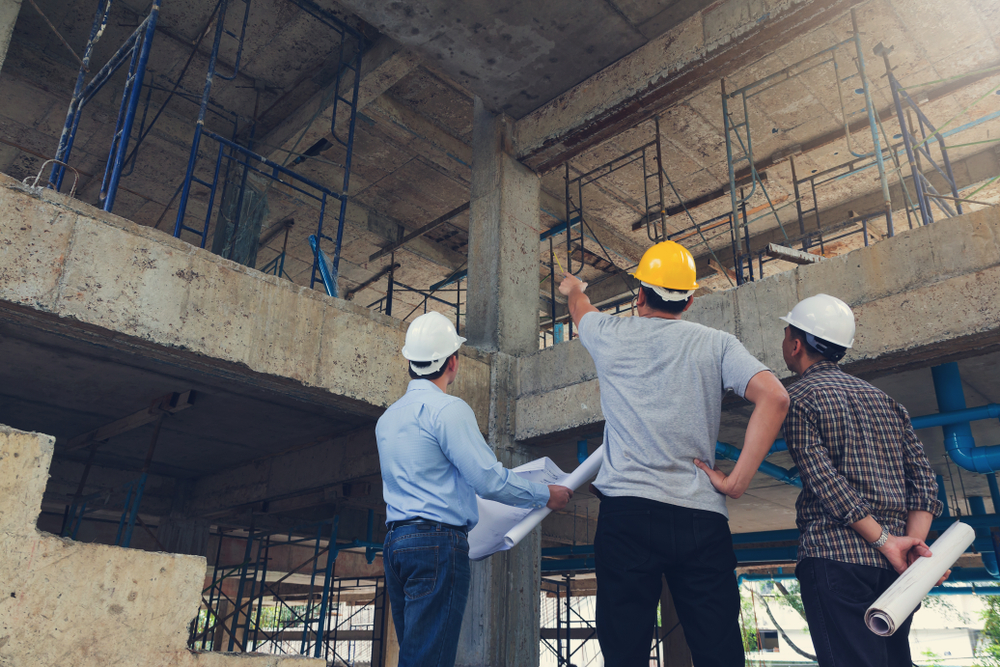
As a property owner in California, ensuring the safety and structural integrity of your building’s exterior elevated elements is paramount. The implementation of SB 721 mandates regular inspections of balconies, decks, and other elevated structures in multifamily residential buildings. Understanding what to expect during an SB 721 inspection can help property owners prepare adequately and ensure compliance with this important safety regulation. The SB 721 Inspection Process Initial Assessment and Documentation The SB 721 inspection process begins with an initial assessment conducted by a licensed inspector or structural engineer. The inspector will review the building’s construction documents, maintenance records, and previous inspection reports. This documentation provides a comprehensive understanding of the building’s history and any prior issues that may need special attention. The initial assessment includes visually inspecting all exterior elevated elements and identifying signs of wear and tear, water damage, and structural weaknesses. Inspectors will look for cracks, rust, rot, and any other indications of potential problems. This step is crucial in determining the structures’ overall condition and planning the inspection’s next phases. Detailed Examination and Testing After the initial assessment, the inspection moves into a more detailed examination phase. This involves closer scrutiny of critical areas, such as the connection points between the balcony or deck and the building and the support structures and railings. Inspectors use various tools and technologies to aid in their evaluation: Moisture Meters: To detect hidden moisture within wood or other materials that could indicate water intrusion or potential rot. Thermal Imaging Cameras: To identify areas with temperature variations that might suggest moisture buildup or other hidden issues. Borescopes: To inspect hard-to-reach areas, providing a clear view of the internal condition of structural components. In some cases, inspectors may need to remove small sections of material to examine the underlying structure. This process, known as destructive testing, is done carefully to minimize damage while gaining essential insights into the structure’s condition. Reporting and Follow-Up Comprehensive SB 721 Inspection Report Once the inspection is complete, the inspector will compile a comprehensive report detailing their findings. This report includes photographs, descriptions of any issues identified, and recommendations for repairs or further investigation. The report is a critical document for property owners, providing a clear roadmap for addressing safety concerns and maintaining compliance with SB 721. The report will categorize findings based on severity, helping property owners prioritize repairs. Immediate hazards that pose a significant safety risk must be addressed promptly, while less critical issues can be scheduled for future maintenance. Repair and Maintenance Recommendations Based on the inspection report, property owners must coordinate with contractors or structural engineers to address any identified issues. Using qualified professionals familiar with SB 721 requirements is essential to ensure repairs are carried out correctly and in compliance with the law. Regular maintenance and timely repairs are crucial in preventing minor issues from becoming major problems. By following the inspector’s recommendations, property owners can extend the lifespan of their balconies and decks, ensuring they remain safe and structurally sound for years to come. SB 721: Ensuring Safety and Compliance In conclusion, an SB 721 inspection is a thorough and detailed process to ensure the safety and structural integrity of exterior elevated elements in multifamily residential buildings. By understanding what to expect during an SB 721 inspection, property owners can better prepare for the process and ensure they meet all regulatory requirements. Regular inspections and proactive maintenance are essential in protecting residents and maintaining the property’s value. By embracing the SB 721 inspection process, property owners can ensure their buildings are safe, compliant, and well-maintained, providing peace of mind for themselves and their residents. Get in contact with a professional deck inspector today by clicking here! Deck Inspectors for Southern California is happy to offer our services in Los Angeles, Orange County as well as San Diego and all Southern California surrounding areas like: Glendale, Pasadena, Burbank, Santa Monica, Anaheim, Temecula, Vista, Escondido, Carlsbad, and El Cajon
The Cost of Neglect: Why SB 326 Inspections Are Worth the Investment
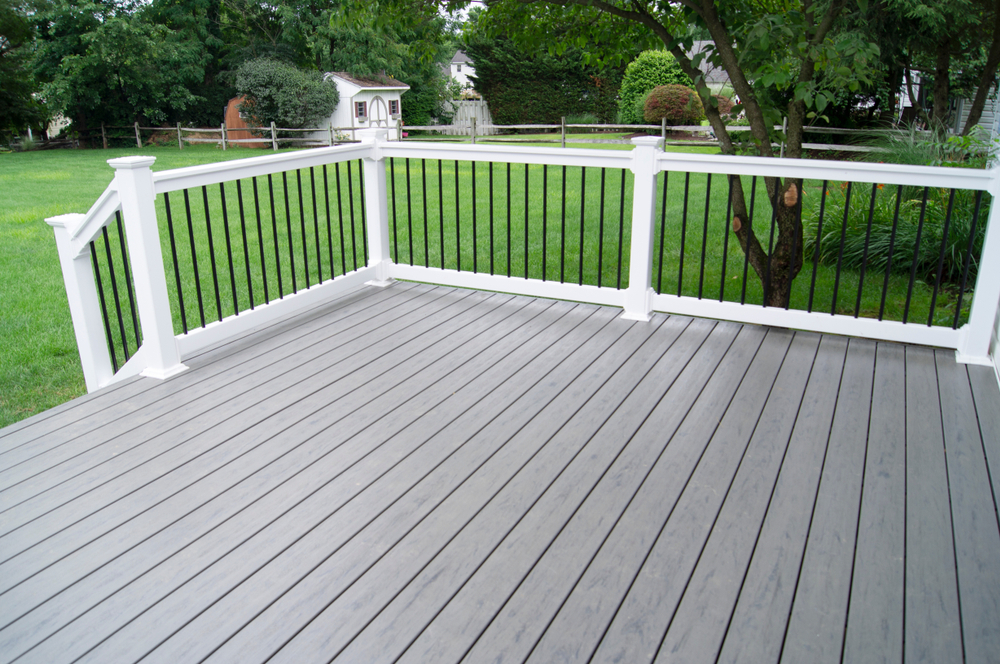
Owning a property comes with many responsibilities, and one of the most crucial is maintaining its structural integrity. In California, the importance of this task has been highlighted by SB 326, a law that mandates regular inspections of exterior elevated elements, such as balconies, decks, and walkways, in multifamily residential buildings. While some property owners may view these inspections as an additional expense, the cost of neglecting them far outweighs the investment. Here’s why SB 326 inspections are essential and why they should be a priority for every property owner. The Hidden Dangers of Deck Neglect Decks and balconies are often considered leisure spaces but can become significant safety hazards if improperly maintained. Over time, exposure to the elements can cause these structures to weaken, leading to potential failures. Water intrusion, wood rot, termite damage, and general wear and tear can compromise the structural integrity of these elevated elements. Neglecting regular inspections can result in minor issues escalating into major problems, posing serious safety risks to residents. Repairing or replacing a failed deck or balcony is significantly higher than regular inspections and maintenance costs. Moreover, the legal and financial repercussions of an accident due to structural failure can devastate property owners. The Benefits of SB 326 Inspections Ensuring Safety and Compliance The primary goal of SB 326 inspections is to ensure the safety of residents by identifying and addressing potential hazards before they lead to accidents. Property owners complying with this mandate protect their tenants and safeguard themselves against legal liabilities. Regular inspections help in the early detection of issues, allowing for timely repairs and maintenance, thus preventing catastrophic failures. Preserving Property Value Well-maintained properties tend to retain their value better than neglected ones. SB 326 inspections contribute to the overall upkeep of a building, ensuring that exterior elevated elements remain in good condition. This proactive approach enhances the property’s aesthetic appeal and extends the lifespan of decks and balconies, ultimately preserving the property’s value. Cost-Effective Maintenance Investing in regular SB 326 inspections can save property owners money in the long run. By identifying issues early, the cost of repairs is often much lower than if the problems were allowed to worsen. Preventative maintenance is always more cost-effective than dealing with emergency repairs or replacements. Moreover, well-maintained properties are less likely to face legal claims from tenants or visitors, reducing potential financial liabilities. SB 326 Inspections: A Wise Investment for Peace of Mind While the initial cost of SB 326 inspections might seem like an additional expense, the long-term benefits make it a wise investment. Ensuring the safety and structural integrity of decks and balconies protects residents, preserves the property’s value, and reduces the risk of costly repairs or legal issues. For property owners in California, complying with SB 326 is not just about following the law—it’s about making a responsible and financially sound decision that pays off in the long run. In summary, neglecting deck inspections can be costly, both in terms of safety and finances. Embracing SB 326 inspections as a regular part of property maintenance ensures that elevated structures remain safe and functional, providing peace of mind for property owners and residents. Get in contact with a professional deck inspector today by clicking here! Deck Inspectors for Southern California is happy to offer our services in Los Angeles, Orange County as well as San Diego and all Southern California surrounding areas like: Glendale, Pasadena, Burbank, Santa Monica, Anaheim, Temecula, Vista, Escondido, Carlsbad, and El Cajon
Elevated Deck Safety: Best Practices for Building and Maintaining a Secure Structure

Elevated balconies and decks are popular in many residential properties, offering additional outdoor living space and enhancing property value. However, ensuring these structures are safe and secure requires adherence to best practices in construction and maintenance. Here are key guidelines for building and maintaining elevated balconies to ensure longevity and safety. Best Practices for Building Elevated Balconies Selecting Quality Materials The foundation of a safe and durable elevated balcony lies in the selection of high-quality materials. Opt for pressure-treated wood, composite materials, or metals resistant to rot, decay, and pests. Ensure that all materials meet or exceed local building codes and standards. Using galvanized or stainless steel fasteners, connectors, and hardware can prevent rust and corrosion, contributing to the structure’s long-term stability. Weather-resistant finishes and coatings should also be considered to protect the materials from environmental damage. These treatments can significantly extend the life of the balcony by preventing moisture penetration and UV damage. Robust Design and Engineering A well-designed balcony should account for load-bearing capacity, proper drainage, and structural support. Engage a licensed structural engineer to design the balcony, ensuring it can support the intended loads, including furniture, occupants, and potential snow or water accumulation. Proper drainage systems should be incorporated to prevent water buildup, which can lead to wood rot and structural weakening. Flashing and waterproof membranes should be used where the balcony connects to the building to prevent water intrusion. Best Practices for Maintaining Elevated Balconies Regular Inspections and Maintenance Regular inspections are crucial for maintaining the safety of elevated balconies. Conduct thorough inspections at least once a year and after significant weather events to identify any signs of wear and tear, such as loose connections, rusted hardware, or wood rot. Pay particular attention to the connections between the balcony and the building, as these critical points can weaken over time. Look for any signs of movement, separation, or water damage. A moisture meter can help detect hidden moisture within wood components, allowing for early intervention before significant damage occurs. Prompt Repairs and Upgrades on Elevated Balconies Address any issues identified during inspections promptly to prevent them from escalating into major safety hazards. Replace rusted hardware, tighten loose connections, and repair or replace damaged wood. In cases where significant structural damage is found, consult with a structural engineer to assess the extent of the damage and recommend appropriate repairs. Regular maintenance also involves cleaning the balcony surface to remove debris and prevent the growth of mold and mildew. Sealants and protective coatings are applied as needed to maintain the integrity of the materials. Upgrading to more durable materials or enhancing the design for better drainage can also improve the safety and longevity of the structure. Ensuring Safe and Secure Elevated Balconies In conclusion, building and maintaining elevated balconies with safety in mind involves careful selection of materials, robust design and engineering, and diligent maintenance practices. By adhering to these best practices, property owners can ensure their balconies remain safe, functional, and visually appealing for years. Elevated balconies provide valuable outdoor space, but their safety and stability must be top priorities. Regular inspections, prompt repairs, and proactive maintenance are essential for responsible property management. By following these guidelines, property owners can enjoy the benefits of elevated balconies while ensuring the safety and well-being of their occupants. Get in contact with a professional deck inspector today by clicking here! Deck Inspectors for Southern California is happy to offer our services in Los Angeles, Orange County as well as San Diego and all Southern California surrounding areas like: Glendale, Pasadena, Burbank, Santa Monica, Anaheim, Temecula, Vista, Escondido, Carlsbad, and El Cajon
